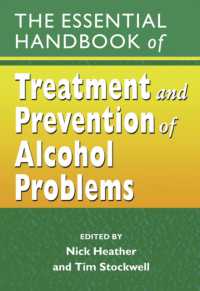- ホーム
- > 洋書
- > 英文書
- > History / World
基本説明
New in paperback. Hardcover was published in 2009. Throughout the nineteenth and twentieth centuries, Sanders shows, these eerily preserved remains came alive in art and science as material metaphors for such concepts as trauma, nostalgia, and identity.
Full Description
Known for his curly red hair, day-old stubble, and uncannily preserved two-thousand-year-old physique, Grauballe Man - a mummified body discovered in 1950s Denmark - was an instant archaeological sensation. But he was not the first of his kind: recent history has resurrected from northern Europe's bogs several men, women, and children who were deposited there as sacrifices in the early Iron Age and kept startlingly intact by the chemical properties of peat. In this remarkable account of their modern afterlives, Karin Sanders argues that the discovery of bog bodies began an extraordinary - and ongoing - cultural journey. Throughout the nineteenth and twentieth centuries, Sanders shows, these eerily preserved remains came alive in art and science as material metaphors for such concepts as trauma, nostalgia, and identity. Sigmund Freud, Joseph Beuys, Serge Vandercam, Seamus Heaney, and other major figures have used them to reconsider fundamental philosophical, literary, aesthetic, and scientific concerns.
Exploring this intellectual spectrum, Sanders contends that the power of bog bodies to provoke such a wide range of responses is rooted in their unique status as both archaeological artifacts and human beings. They emerge as corporeal time capsules that transcend archaeology to challenge our assumptions about what we can know about the past. By restoring them to the roster of cultural phenomena that force us to confront our ethical and aesthetic boundaries, "Bodies in the Bog" excavates anew the question of what it means to be human.








